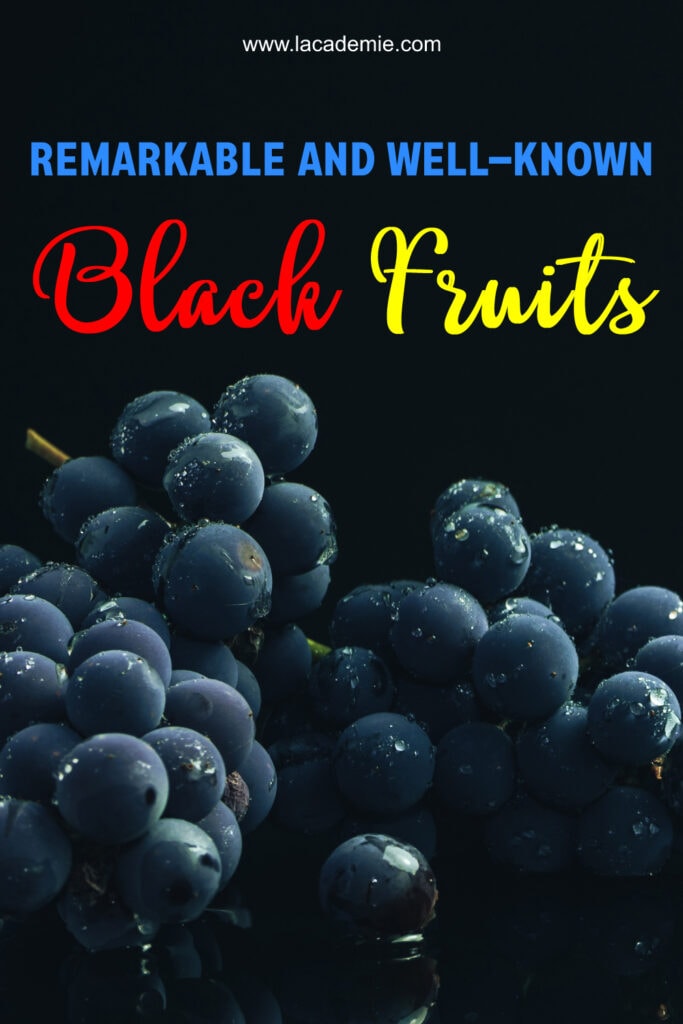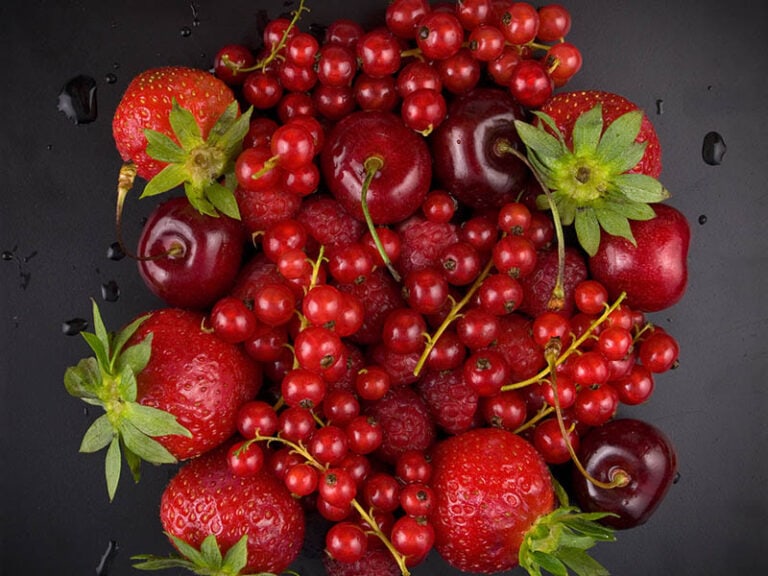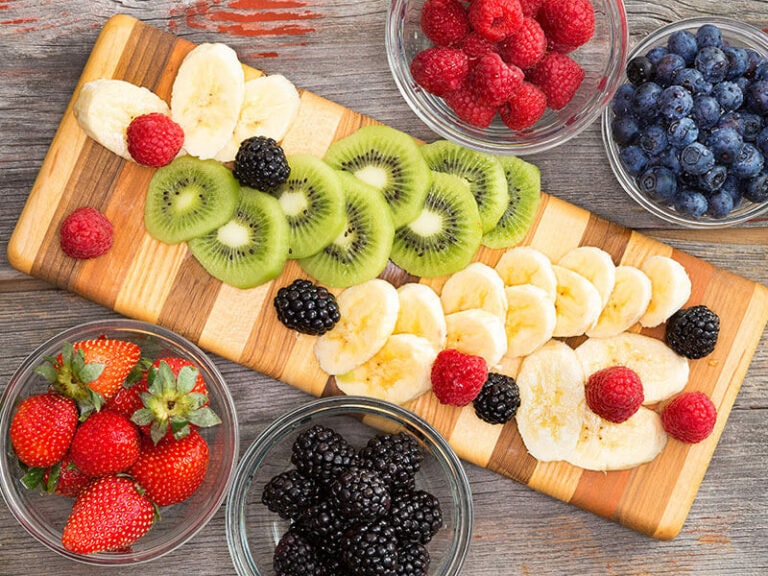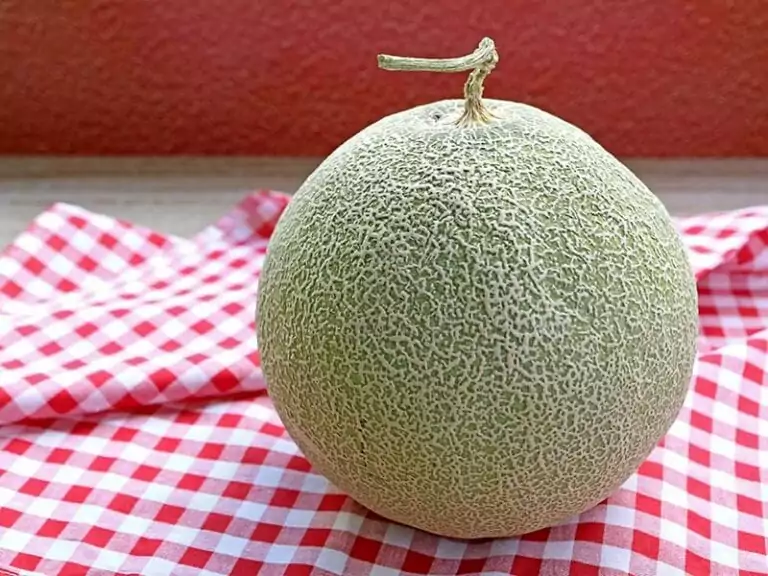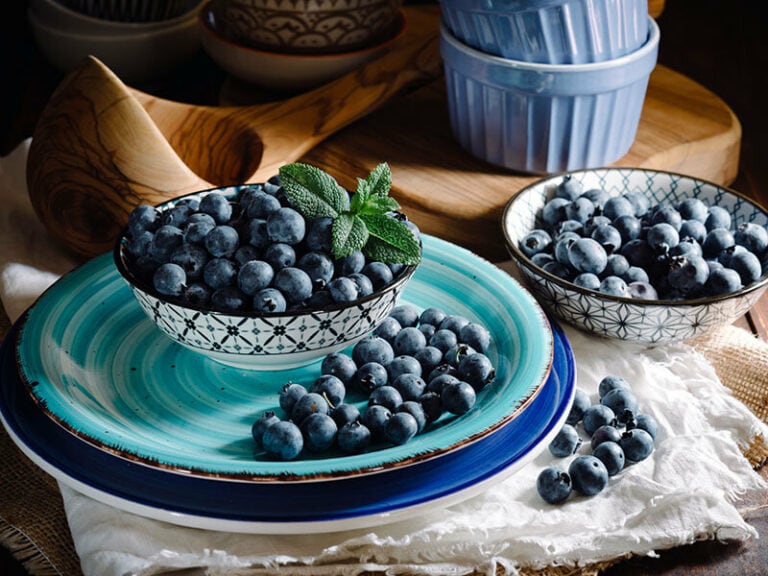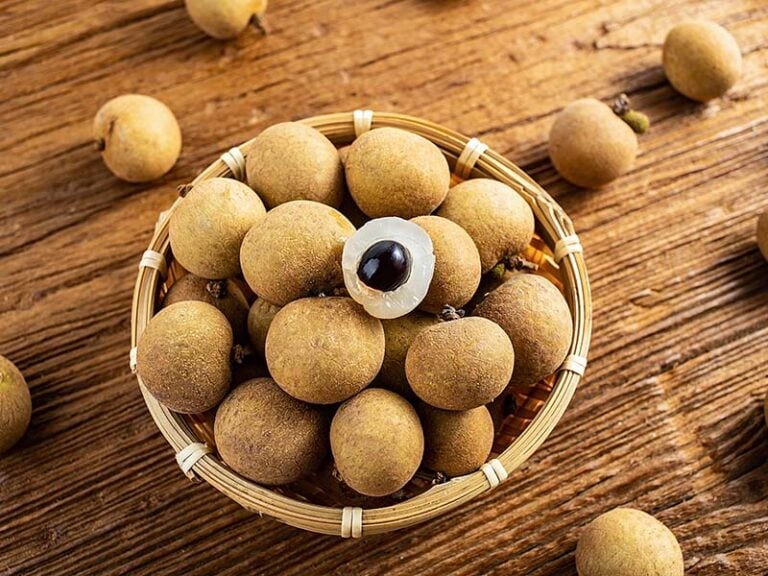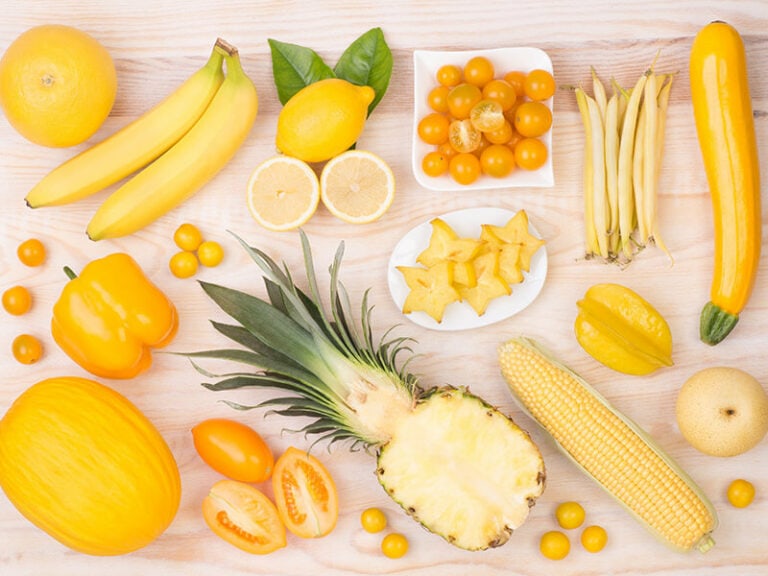Many excellent and tasty black fruits are found on the Earth. Their unique and beautiful color is a suitable suggestion for decorating foods or consuming as a fresh and succulent dessert. Also, they are high in beneficial nutrients.
It’s time to refresh your taste buds and enjoy many extraordinary experiences with these fruits I am about to mention in this article. Please read on to get the best and most compatible choice.
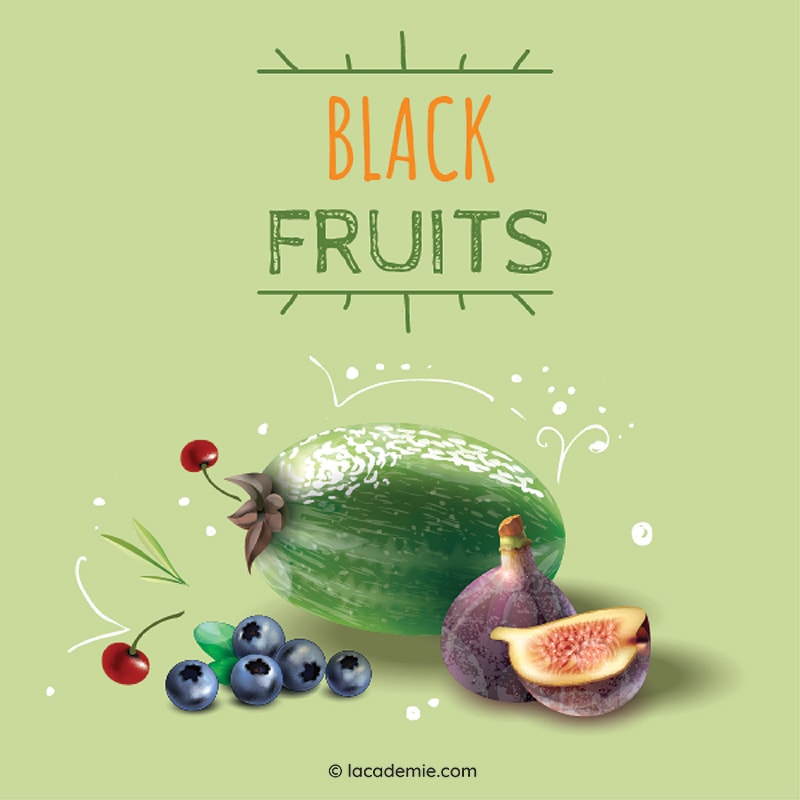
Delicious Black Fruits Belongs To The Berry Category
There are many excellent fruit types all over the world, but I still have a big love for those that come in black color. Their beautiful and unique hue always captivates me when I look at them.
First, let’s begin with those belonging to the berry group to find out what they are.
1. Black Cherry Tomatoes
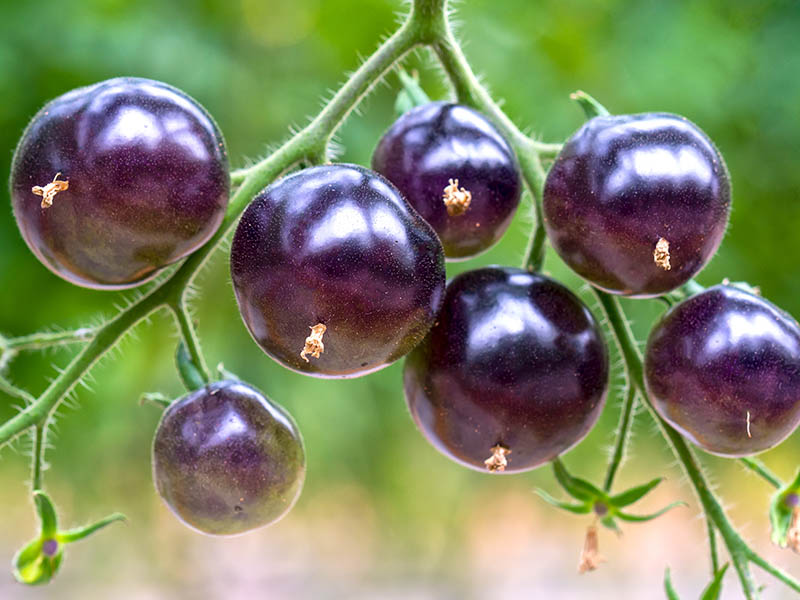
Nowadays, cherry tomatoes are pretty well-known in many different regions. They are small and have a perfectly round shape. Many people think that this variety is a combination of domesticated garden tomatoes and wild currant ones.
Usually, they are yellow, blue, purple, or red. Nonetheless, black versions are always my preferred choice to highlight dishes. Regarding their origin, darker-colored cherry tomatoes derive from the vicinity of Russia.
To preserve fresh, smokey, and sweet black cherry tomatoes, I recommend storing them at room temperature to keep their authentic flavor. Of course, it’s no trouble to preserve them in the fridge or freezer for longer uses.
Season: Peak season in the hottest summer months.
Nutrients: High in antioxidants, vitamin C, and calcium.
How to eat: Eat whole fruit or cut it into small pieces to use.
Explore more about black cherry tomatoes by listening to the review.
2. Black Avocados
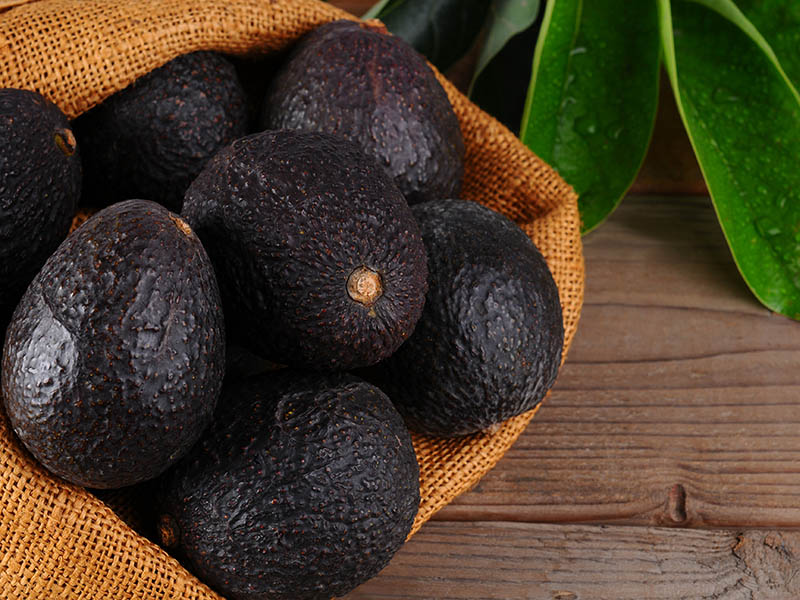
Among various avocado species, black avocados is more special. If most avocados are sourced from south-central Mexico and Guatemala, this black species is pretty common in Florida. It is also known as Mexicola avocados.
For more specific, compared to Hass avocado, Mexicola is smaller in size. It usually appears with a smooth and sleek crust. Furthermore, the characteristic black color will help you recognize it quickly. Like other varieties, its flesh is yellow or green.
Apart from the Mexicola avocado, Hass, Maluma, and Frazer are the common types that also have typical thick and black skin.
Do not forget to leave the ample seed inside the fruit while consuming it. You can enjoy buttery and earthy avocado when it is fresh or turn it into smoothies, salads, or desserts. Besides this color, you can find some with green, purplish, or brown skin.
Season: From April to October (for Hass variety).
Nutrients: Plenty of fiber, vitamin B6, C, E, magnesium, potassium, and folate.
How to eat: Dice it into two halves with a knife, throw the seed, and use a spoon to scoop out the flesh.
3. Black Diamond Watermelon
There are several varieties of watermelon found worldwide, but black diamond watermelon makes a strong impression on me. Its name is presumably derived from its thick and glossy black-green skin.
Like other watermelon varieties, this version also has bright red, succulent, and mild sweet flesh. Due to its high level of water, you will feel relaxed and comfortable after taking a bite of black diamond watermelon, especially on hot days.
People also love to use this fruit to make fresh and delectable juice, smoothies, ice cream, and other sweet treats. And if you do not know where to find this fruit, you can easily buy this at fruit markets in the US as this watermelon variety is native to America.
Season: Starts to flower from July to August.
Nutrients: High in vitamin A, C, and E.
How to eat: Cut it into small slices and eat the flesh from the rind. You have to throw its seeds while consuming.
4. Black Grapes
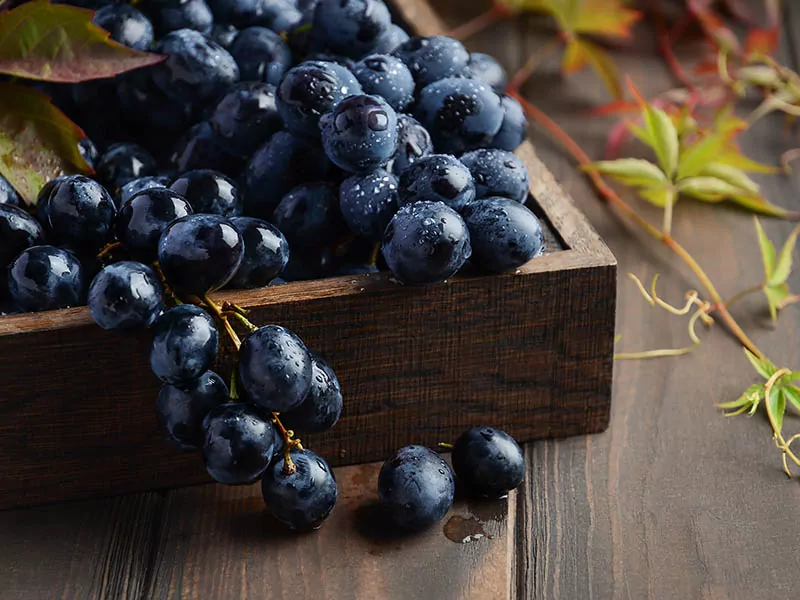
There are many different cultivars of grapes with countless colors and flavors, but black grapes always capture my heart. The cultivation of black grapes has been going on in Europe and Asia for more than 6000 years.
Until now, two main types of black grapes have been found. One variety is abundant in western Asia, and another one is pretty common in the Americas. People often use these fresh and succulent grapes to make wine or snacks.
When enjoying these fresh grapes, their tangy-sweet taste will awaken your taste buds in no time. Compared to green and red grapes, some black varieties contain more antioxidants. They are a perfect food for preventing cancers, diabetes, and heart diseases.
Season: From summer to autumn (black seedless types).
Nutrients: Rich in potassium, vitamin C, and K.
How to eat: Consume them fresh as snacks or desserts. Using them to make jam or wine is also a good idea.
Discover the reason why black grapes are the healthiest fruit.
5. Blackcurrants
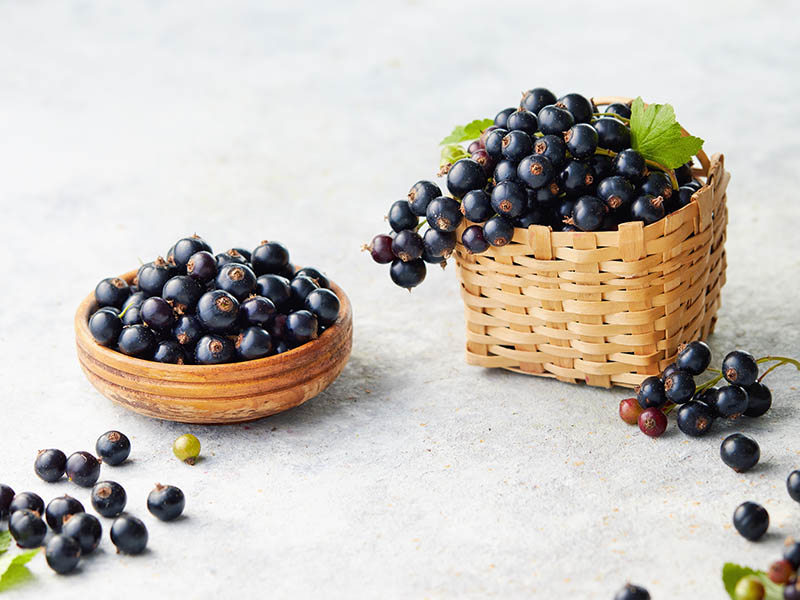
Blackcurrant is an incredible berry, and it is native to northern and central Europe and northern Asia. Nowadays, you can find it in many temperate areas worldwide. In Europe, people started cultivating blackcurrant in the late 17th century.
In the United States, English settlers brought blackcurrant to the country in 1629, and it was widely planted in New York. It is a versatile fruit because people can use it for commercial or domestic purposes.
It looks great in a dark purple or black and glossy coat. And you will find many seeds inside each juicy berry. You may think of passion fruit or raspberry when enjoying this fruit because of the similarities in flavor.
If you want to supplement with a large amount of vitamin C, it is an ideal source for you. This yummy fruit often appears in syrups, jams, drinks, and chutneys in culinary. Also, you can make dyes or cosmetic products with it.
Season: Its season can be in June, July, or August.
Nutrients: Good source of iron, calcium, phosphorus, magnesium, vitamin B1, B2, and B5.
How to eat: Consume them raw, or use them to make jam or juice.
6. Black Huckleberries
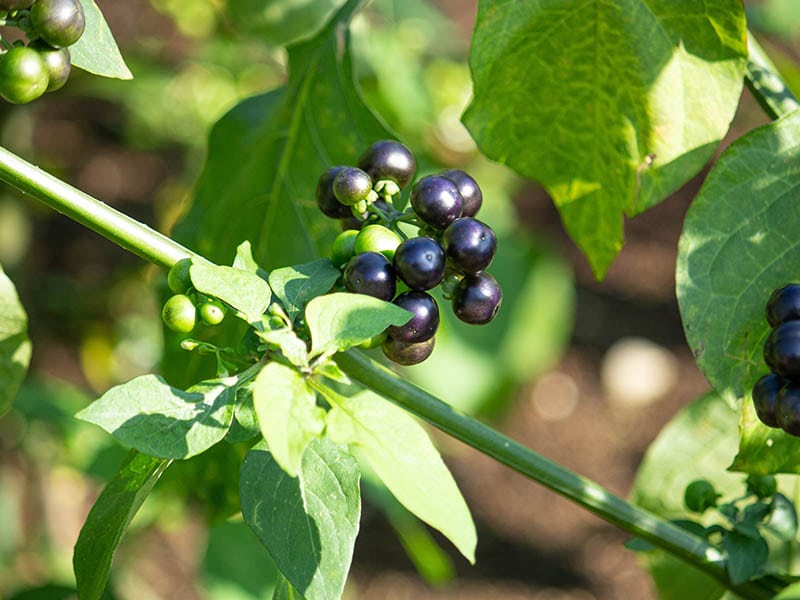
Among many excellent types of berry, black huckleberries are one of those fruits with a distinctive and beautiful black color. You can find them in the wild commonly in the United States and Canada. American tribes picked them and used them for food and medicine.
They smoke or dry the berries to create delicious cakes. Not only that, native Americans wrap them in leaves to use over the winter. Additionally, black huckleberries seem sweeter than red ones.
Nowadays, people use these healthy fruits in smoothies or muffins. They will provide a large amount of vitamin C, B, iron, and potassium for your body.
Season: Available to harvest by mid-summer.
Nutrients: Plenty of antioxidants, vitamin B, C, iron, and potassium.
How to eat: Eat the fruits fresh, or use them to make baked foods, jam, or jellies.
Check the real flavor of black huckleberries here.
7. Black Goji Berries
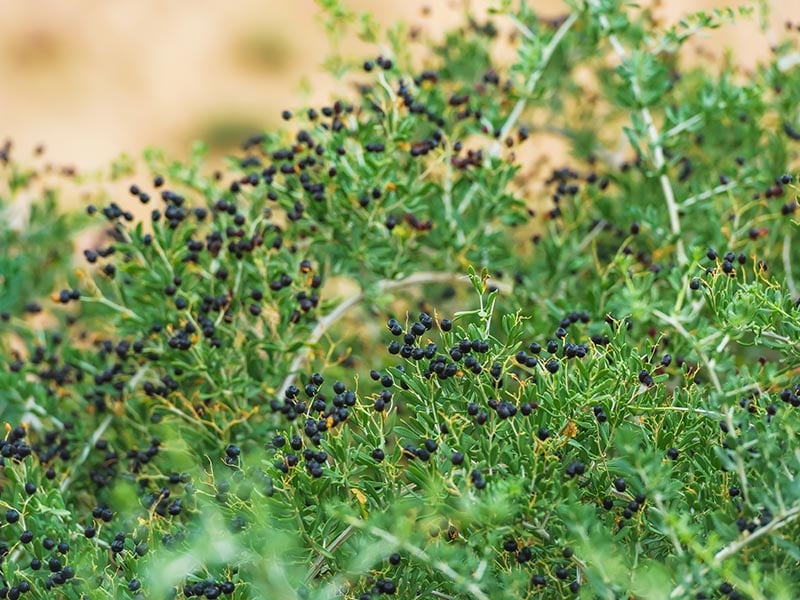
Black goji berries or black wolfberries are the healthy and delicious fruit you must try. They originate in Central Asia, Northern India, Russia, and Pakistan. Usually, this fruit is ripe between August and October.
The native Indians often utilize this fruit for treating blindness in camels. For cooking, besides consuming them fresh or dried, you can prepare incredible purple-colored tea with this fruit for relaxing.
For planting them, you have to soak the seeds in warm water for about 1 day. To get the best results, I recommend using alkaline soil and keeping it dry.
Season: From August to October.
Nutrients: Rich in antioxidants, vitamins A, C, E, fiber, iron, and protein.
How to eat: Before consuming them, you need to rinse them with clean water. Eat them alone or mix them in your cooking recipes.
8. Black Gooseberries
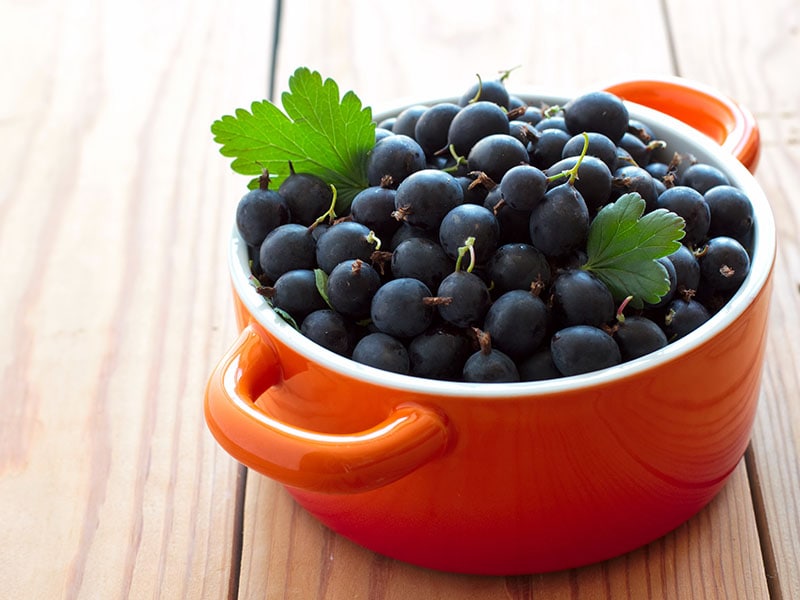
If you search for fruits that are green, you can opt for green gooseberries. However, the black species of gooseberries are far cry from the regular green ones.
This species derives from the Pacific Northwest. You should only consume these black fruits when they are fully ripe for the delicate and appealing sweetness.
Of course, they’re packed with antioxidants because they are in the black fruits group. Apart from eating fresh ones, it is good to make jams, smoothies, and pies with this fruit to eat.
Season: Based on the weather, but typically in mid/late June to July.
Nutrients: Rich in antioxidants, vitamin C, fiber, and potassium.
How to eat: Before eating, you have to cut the bottom and top of these berries.
9. Black Hawthorn Berries
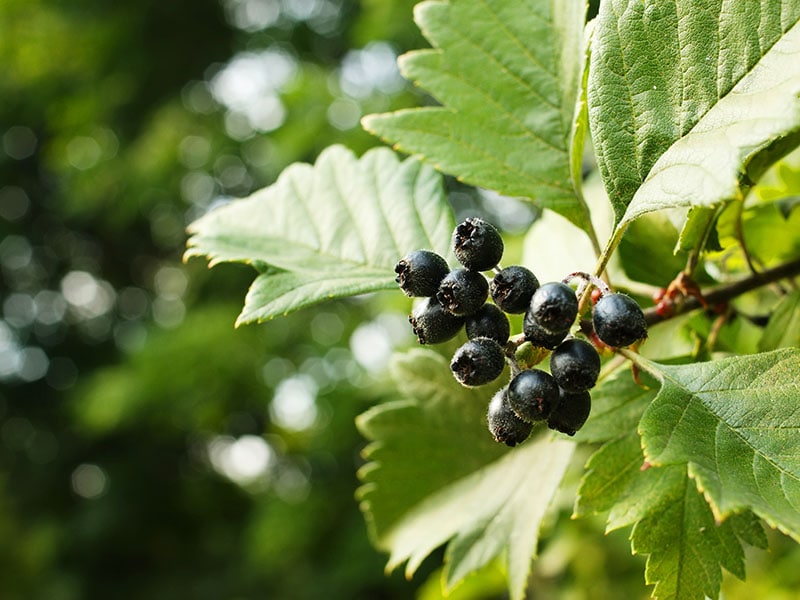
Hawthorn berries are pretty famous in parts of the Northern Hemisphere in Europe, North Africa, Northern America, and Asia. You can come across hundreds of different species of these berries in countless colors, and the black version deserves a place on this list.
I often use these slightly-sweet and tart berries to create delicious snack recipes. It is incredible to enjoy relaxing moments of the day with black hawthorn berry snacks and a cup of tea or coffee. Also, they are suitable for making wine or salad.
In case you have problems with blood pressure, you should not skip this choice. Furthermore, they help reduce the risk of cardiovascular diseases and improve skin health.
Season: This fruit is often available in mid-autumn.
Nutrients: High in vitamin B, C, phenols, and flavonoid rutin.
How to eat: Enjoy these fruits fresh or add them to your tea. They are also for making jam or desserts.
Expand your knowledge of the health benefits of hawthorn berries.
Collection Of Drupe And Aggregate Fruits With Black Hue
Aggregate fruits are those that come from a single flower, and blackberries and raspberries are the iconic members of this group. So do not mistake that they are berry fruits.
On the other hand, drupe fruits contain only one seed in the center of them. So how many are they featuring a black hue? The below part will open your mind.
10. Blackberries
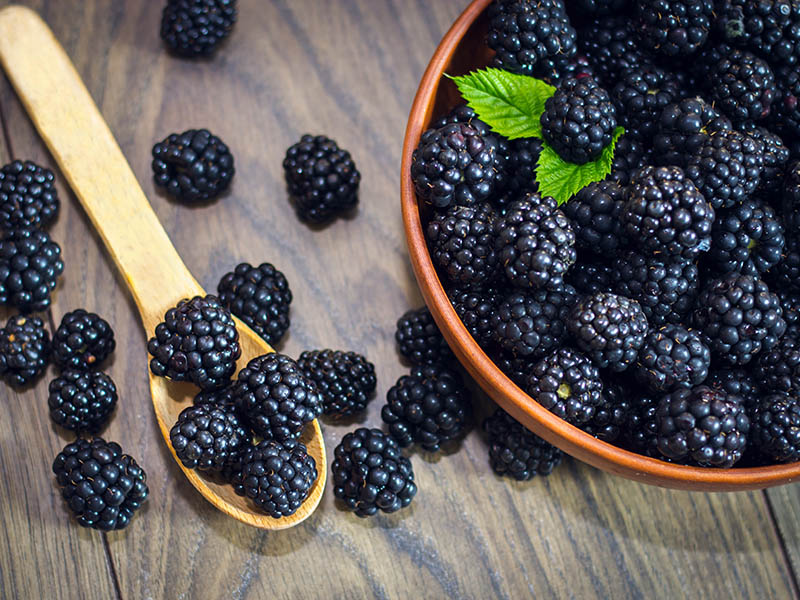
Blackberry is a long-standing fruit as it has existed since the old times. It is native to both Asia and Europe. They also come in different kinds from various regions. The common variety is Rubusulmifolius, which is native to western Europe and northern Africa.
In terms of culinary purpose, the London Pharmacopoeia also shows that blackberries have been a good ingredient in making wine, thanks to their juicy texture and tart flavor.
It also pairs well with other fruits to create jams, pies, and jellies. In short, blackberries have a bold and eye-catching shade that can be an excellent addition to your menu.
Season: Its season runs from mid-June to early October.
Nutrients: High in antioxidants, minerals, vitamin C, E, and K.
How to eat: You can easily eat them after washing them with water.
It is not too hard to grow blackberries at home.
11. Black Raspberries
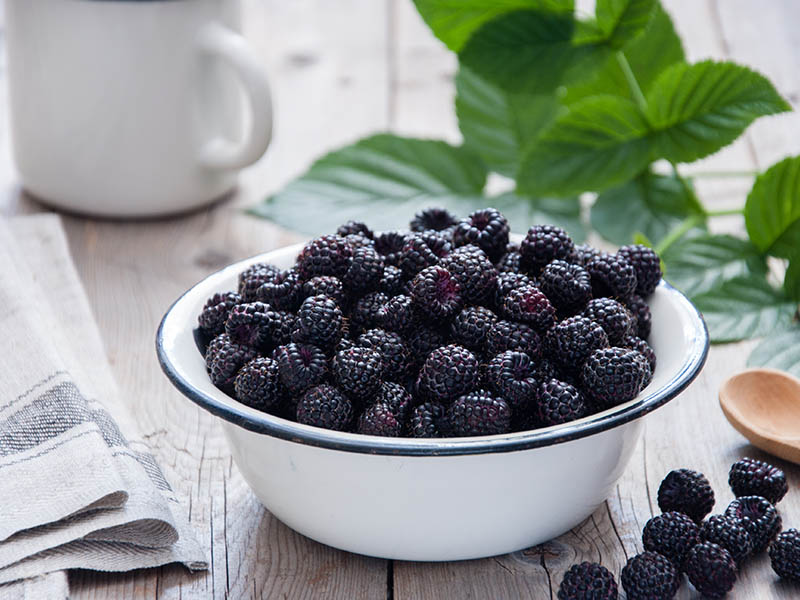
I have a big crush on the black version among various kinds of raspberries in other colors. Why? Because their attractive flavor and appearance captivate me immediately with their sweet and tangy taste.
There are 2 different types of black raspberries, which are Rubus Leucodermis and Rubus occidentalis, that distribute in various regions. The former is popular in western North America, while eastern North America is the birthplace of the latter variety.
On the other hand, Korean black raspberries originate in East Asia. Either type of them, the raspberries’ refreshing and distinctive flavor is a fantastic choice for making delectable pies, jams, jellies, and drinks.
Additionally, these high antioxidants and vitamin C berries appear in many smoothie bowls and yogurts.
Season: This fruit is often ripe in early to mid-summer.
Nutrients: Plenty of vitamin C, fiber, calcium, and potassium.
How to eat: Enjoy them fresh after removing all dirt with clean water.
12. Black Dates
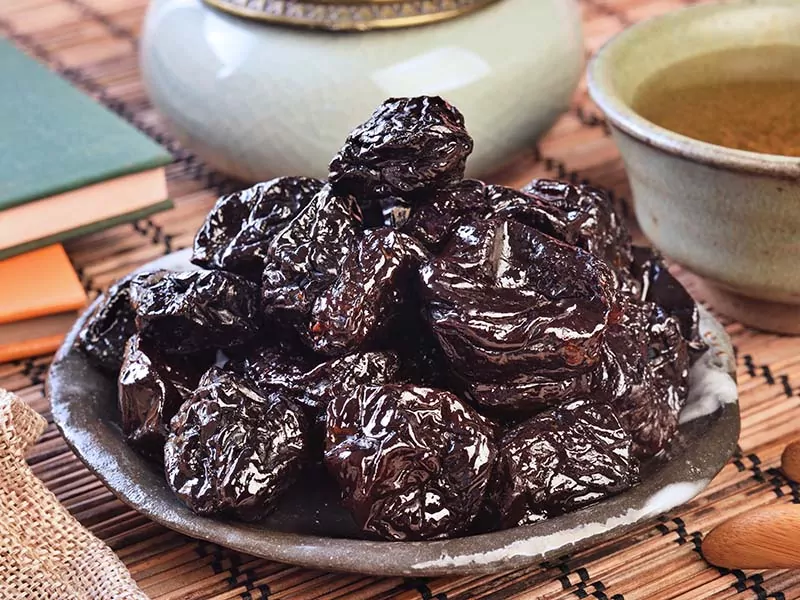
Dates are members of the Arecaceae family and are common in the Middle East, northern Africa, and South Asia. There are a lot of date varieties with various colors such as red, yellow, or dark brown.
Besides these varieties, you can see dates in black color. They have an oval-cylindrical shape with dense flesh and edible skin. Typically, I have to release the seeds while eating black dates. They are a great snack for you and your family.
Alternatively, it is possible to use this sweet fruit in baked goods and other treats. If you regularly exercise and play sports, you should not ignore them since they help to add stamina and energy to your body.
Season: Available all year round.
Nutrients: Plenty of fiber, vitamin A, B-complex, E, K, polyphenols, antioxidants, and more.
How to eat: You can enjoy the skin and flesh of dates. Don’t forget to remove its seed.
13. Black Cherries
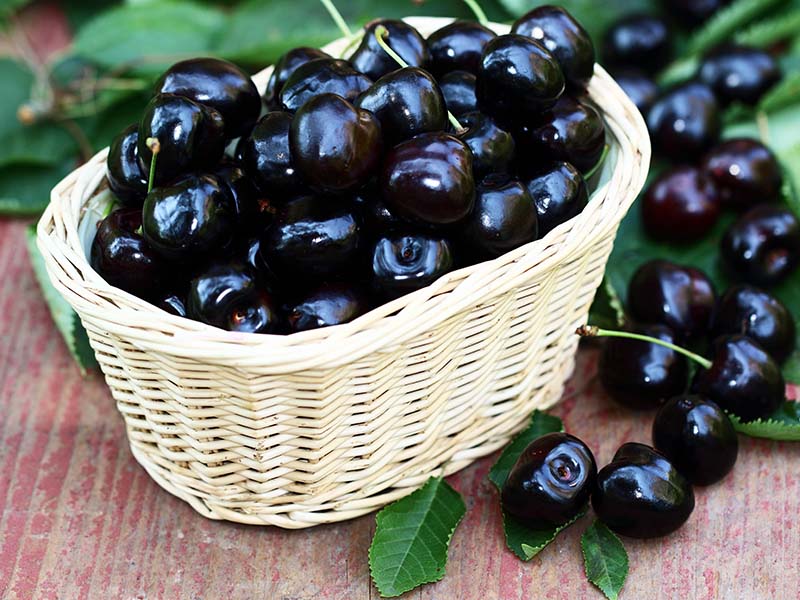
You’ll be impressed by the mesmerizing and eye-catching black color of black cherries. This yummy fruit is a common choice of chefs for excellent jams, pies, liqueurs, and other desserts. And their woody, sweet, and lemony flavor will not let you down.
There are countless different varieties of cherries, but I still hold a special place in my heart for these dark cherries. You can find them easily in North America and South America. Also, they are native from Mexico to Guatemala.
If you need foods high in potent antioxidants and anthocyanins, you should have plenty of black cherries in your refrigerator. In particular, black cherries help reduce the symptoms of gout and uric acid levels.
Season: Its season lasts from mid-May to June.
Nutrients: Perfect source of antioxidants, anthocyanins, vitamin C, calcium, and iron.
How to eat: Enjoy cherries raw for the best flavor. Do not consume their seeds.
14. Black Olives
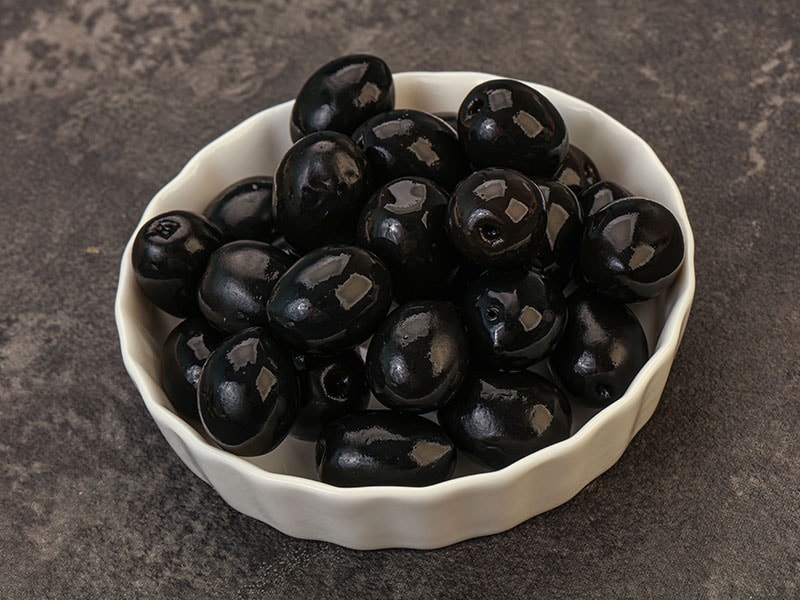
If you want to accentuate sandwiches, pasta, or pizzas, you should take advantage of the black shade of black olives. Moreover, you can take oil from them and add them to many desserts for a variety of flavors.
Compared to the green version of this fruit, they have a milder flavor and softer texture. Also, people often pick green ones before they’re ripe, while black olives are picked when they are mature. And the calorie content of the black version is also higher.
To get rid of the bitterness of black olives, people often use salt, lye treatments, or brine. This olive is derived from Central America, South America, Mexico, and the Caribbean.
Season: Its season lasts from mid-November to December.
Nutrients: Calcium, iron, magnesium, sodium, potassium, and copper.
How to eat: Grab a bite of them and chew around the pit, or use a knife to cut olives if they are big.
Check these health benefits of black olives immediately.
15. Black Plums
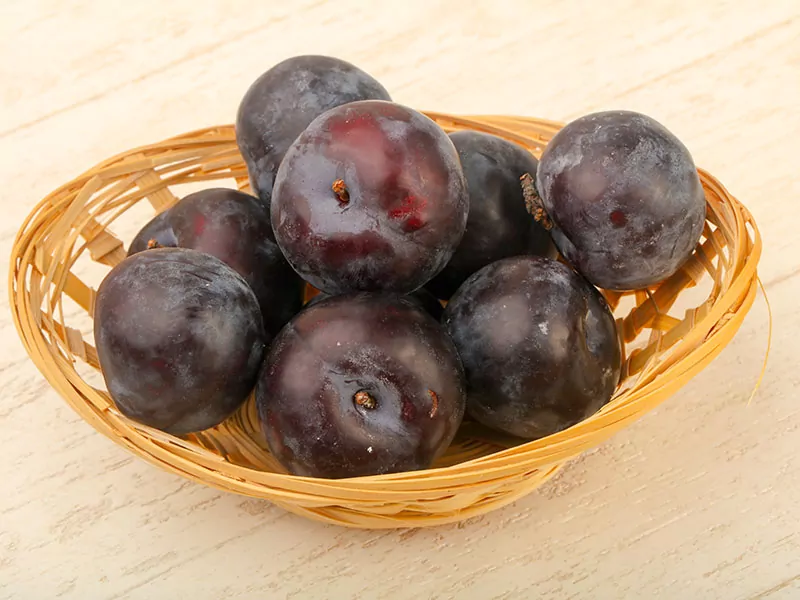
Suppose you get a question about fruit with blue-black skin and yellow, orange, or red flesh, do not hesitate to call the name “black plum”. Black Ruby, El Dorado, Friar, and Black Plendor are its popular varieties.
Black plum usually grows in a round or oval shape. Even better, when you touch this excellent black fruit, its smooth and sleek skin gives a pleasant feeling. Also, you will be addicted to its harmonious sweet-tart taste.
Black plum is pretty popular in Southeast Asia and India. The tropical climate is ideal for the vigorous growth of this incredible fruit. Besides culinary, this fruit has excellent value in medicine with many health benefits.
It helps to improve your skin and eye health effectively. Furthermore, this fruit strengthens your teeth and boosts heart health. If you have diabetes, please eat black plum regularly.
Season: The season lasts from July to October.
Nutrients: High in vitamin C, K, A, potassium, or other minerals.
How to eat: Use a knife to discard the skin and eat the flesh. Please remove the seed white consuming.
Diversify Your Options With Other Black Fruits
Apart from many great fruits in the above part, you can follow this section to get other ideas for black fruits. I believe you will surely fall in love with their taste.
16. Black Aubergine/Eggplants
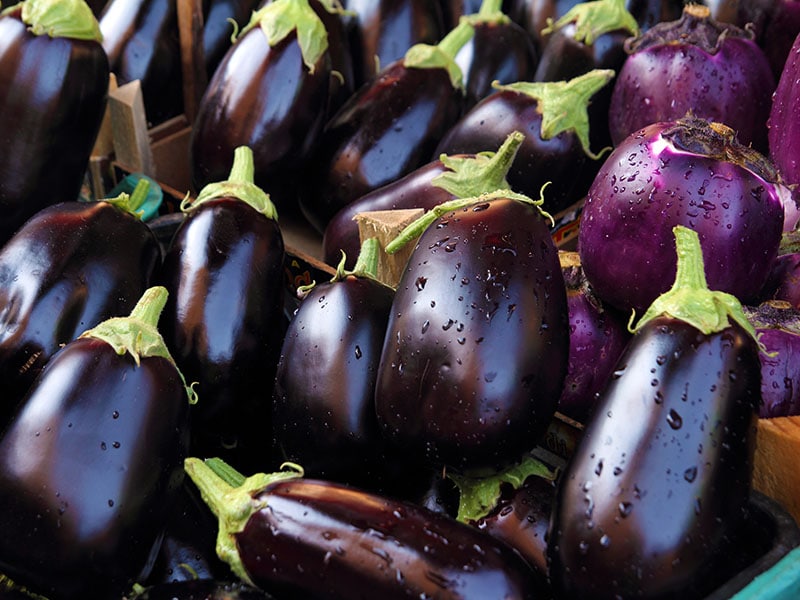
The mysterious black color of black beauty eggplants will leave a deep impression in your mind at first sight. If you live in a warm climate, you should try planting this eggplant right away because it thrives well in this weather.
You might think eggplants belong to the group of fruits with purple color, but apart from purple-skin aubergine, this black and glossy version is also pretty famous. It is typically large and has white flesh.
People love to use this fruit for frying or stuffing foods. I usually see them in pizzas, pasta sauce, dips, or risottos. It has a relatively mild taste, and unripe black aubergine is often mildly bitter. However, this taste’ll disappear when it is ripe.
Season: Its peak season lasts from July to October.
Nutrients: Rich in magnesium, potassium, folate, and phosphorus.
How to eat: Cut it into small pieces and add them to the dishes, or you can use it for making stuffed dishes.
Learn new things about incredible black aubergine right away!
17. Black Figs
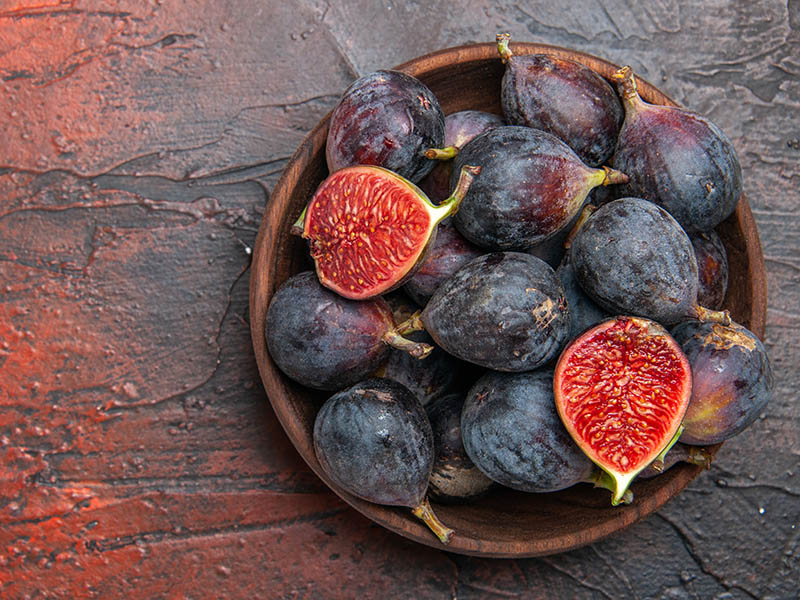
Black figs are an indispensable name in this list. People often call them the sweetest version of figs. They are also known as “black mission figs”, and this variety is derived from the Balearic Islands in the western Mediterranean Sea.
This famous food with a black shade first appeared in America in 1768 and became a leading commercial fruit in California. In terms of appearance, they have black skin and strawberry-like colored flesh. And, you’ll easily find cracked skin figs when they’re ripe.
Note, in case you would like to grow this black fruit, you should be careful with frost because they are pretty sensitive to this climate. In addition, the fig mosaic virus adversely affects the tree’s leaves, but the fruit will still grow steadily.
Season: Its season lasts from mid-May to November.
Nutrients: High in fiber, magnesium, vitamin A, and C.
How to eat: You can enjoy the fruit after cleaning it with water.
18. Black Tamarind
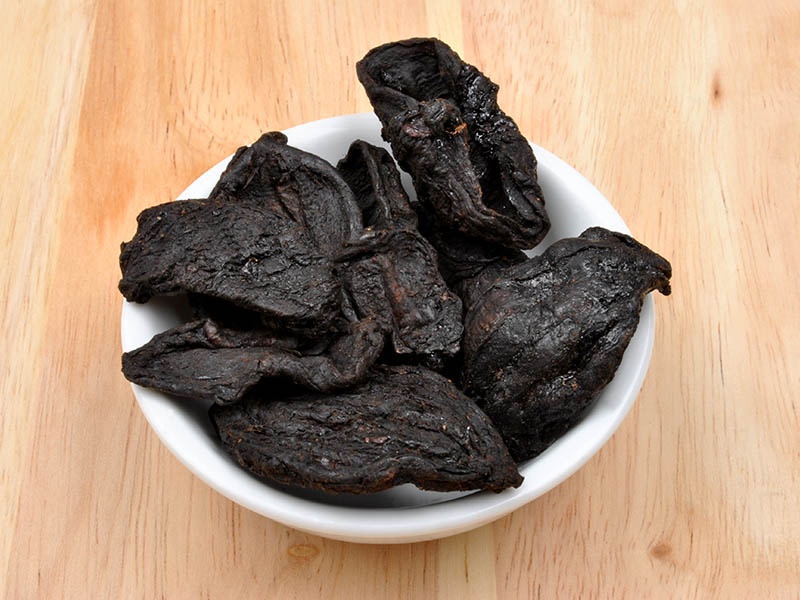
Black tamarind is a fruit native to West Africa. It is about the same size as a grape with hard black skin. It has many different names depending on the area in which it exists, such as the black cat in the Ivory Coast or the Solomon in Senegal.
You can eat the raw pulp of this tamarind or enjoy it as a beverage after soaking in water. Also, you’ll come across the sour and sweet fruit in sauces, desserts, medicine, and chutneys.
Black tamarind contains many nutrients that are good for preventing the risk of chronic diseases. Not only that, it has a positive effect on preventing high blood pressure and cardiovascular diseases. Plus, it is an excellent source of antioxidants.
Season: Its season extends from January to March.
Nutrients: High in vitamin C, K, B6, B5, folate, and calcium.
How to eat: Remove the skin by hand, then consume the flesh and get rid of its hard seeds.
19. Black Tupelo Fruits
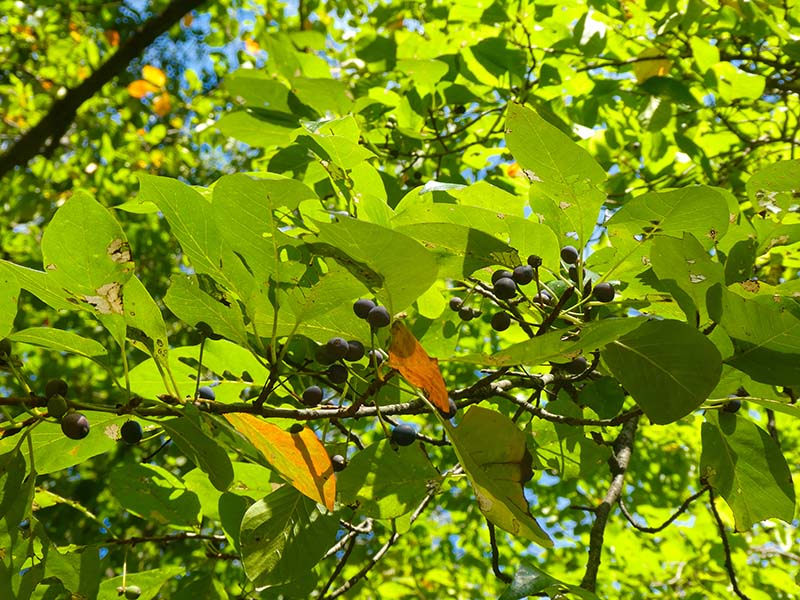
Black tupelo fruits or black gum trees are the native fruit of eastern North America and Mexico. The tupelo name is derived from the Greek words “ito” and “opilwa”, which mean “tree” and “swamp”. People began to use this name widely in the mid-18 century.
These black berries exist in round shapes, and people often enjoy raw or cooked tupelo fruits. Their signature tangy taste will knock you down from the first try. Thus, I recommend making jelly with them since their seeds are pretty significant.
Season: Its season extends from late September to early October.
Nutrients: High in vitamin C, antioxidants, and minerals.
How to eat: Use them to make jellies, jams, juice, and preserves, or you can eat them fresh if desired.
Some mind-blowing facts about black tupelo fruits that you should know.
20. Black Hungarian Peppers
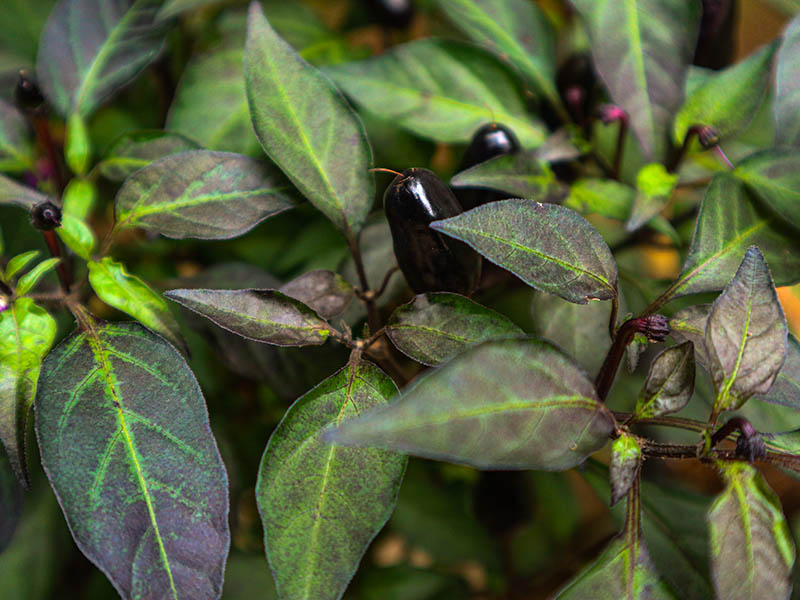
Black Hungarian pepper originates in Kiskenfelegyhaza city in Hungary. This exotic fruit has a similar shape to jalapeno. Aside from the characteristic black shade, its slight heat will tickle your taste buds immediately.
Furthermore, you also feel the gentle sweetness of this excellent fruit. That’s why I love to put some fresh pepper into corn salsa or black bean to diversify the flavor and color of the dishes.
Season: It is common in the warm season.
Nutrients: Plenty of vitamin A, C, magnesium, thiamin, and phosphorus.
How to eat: Consume a whole one or slice it into small slices and add them to your salsa or other dishes.
21. Black Elderberries
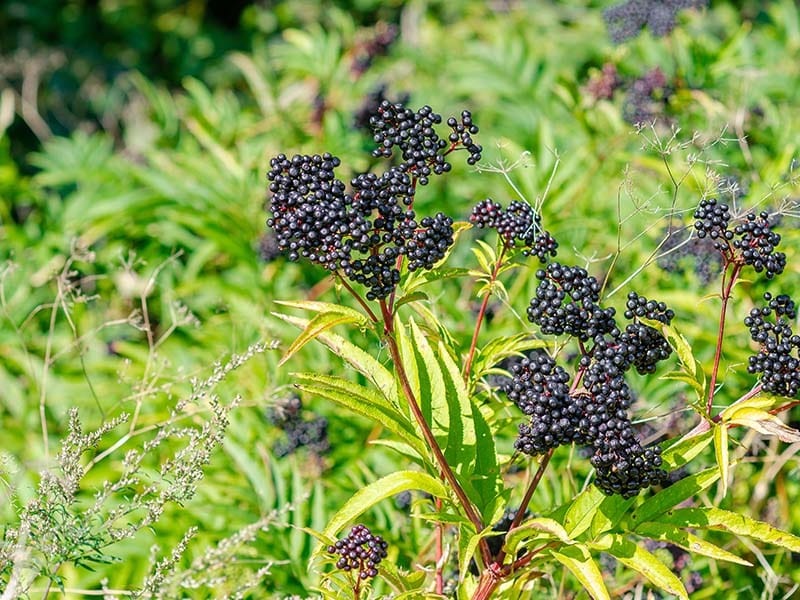
Black elderberries are a reasonably well-known fruit for their intense flavor. Typically, mature elderberries have a tangy and slightly bitter taste. Also, if you want sweet elderberries, you can refer to the American version.
When you look at black elderberries, you’ll notice their color ranges from deep purple to black. Usually, they will gather in clusters on the stems. But please remember that you should not eat raw elderberries because they are poisonous.
Nutritionwise, these black berries help improve your immune system significantly. Furthermore, thanks to their high vitamin C content and antioxidants, these excellent fruits will help prevent diseases.
Season: Its season runs from mid-August to mid-September in the US.
Nutrients: Contain fiber, vitamin C, and potassium.
How to eat: Cooking the fruit to make jam, jelly, syrup, or baked goods is the best way because raw ones are poisonous.
22. Black Jamun Berries
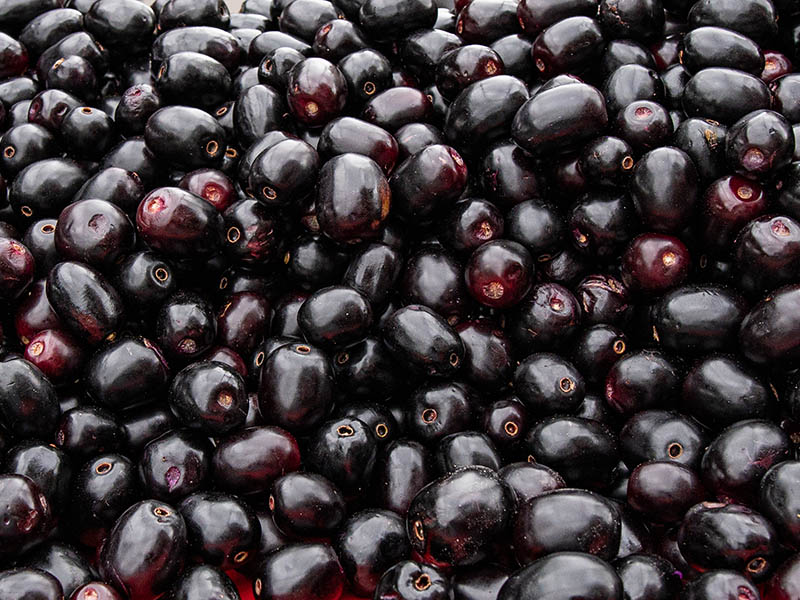
When it comes to unique Indian fruits, it is impossible not to mention black Jamun berries. The black fruit is famous in India, Myanmar, Andaman Island, and Sri Lanka. In the USA, this fruit appeared in Florida in 1911.
These tiny fruits will catch your eyes immediately with their mysterious and alluring black color. Inside the thin black skin, you find the pinkish-white flesh. And it is hard to resist the charm of these berries’ sweet and sour flavor.
If you search for the invasive species of this fruit, you can go to Florida, the Caribbean, Hawaii, or South Africa. Not only is a bird’s favorite food, but these berries also make great sauces, jams, syrups, or salads.
Season: Often in the summer, or it is available all year round in tropical and subtropical regions.
Nutrients: Rich in vitamin C, potassium, iron, and magnesium.
How to eat: Wash these berries with fresh water and eat the flesh. Do not forget to remove the seed.
23. Jabuticaba
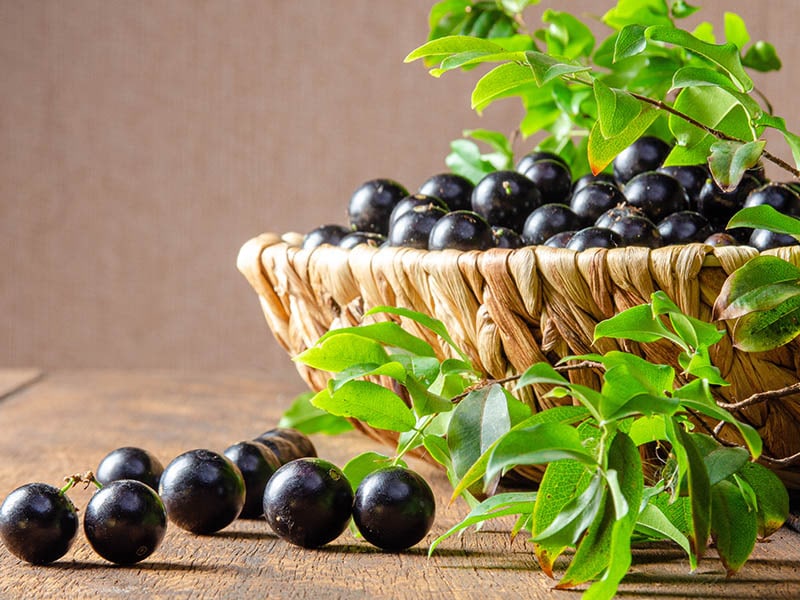
Jabuticaba is a well-known fruit in Brazil. You can buy it easily in Minas, Rio de Janeiro, São Paulo, and other states. In addition, this exceptional fruit is common in Paraguay, Argentina, and Uruguay. Plus, you can eat it raw and process it into juice, jams, jellies, or wine.
The combination of “jabuti” and “caba” has created the complete name of this fantastic fruit. I am pretty satisfied with the perfect round shape and its black and glossy shell. Even better, the white and sweet flesh will not let you down.
Jabuticaba has many different types distributed in many parts of the world. Sabara Jabuticaba is the most popular species.
Fun facts: people think that Jabuticaba’s taste is similar to Kyoho grapes in Japan.
Season: Its season lasts from late March to April.
Nutrients: Rich in calcium, iron, protein, vitamin B, and C.
How to eat: Enjoy the fruit raw or process them into juice, jams, jellies, or wine.
24. Black Mangosteen
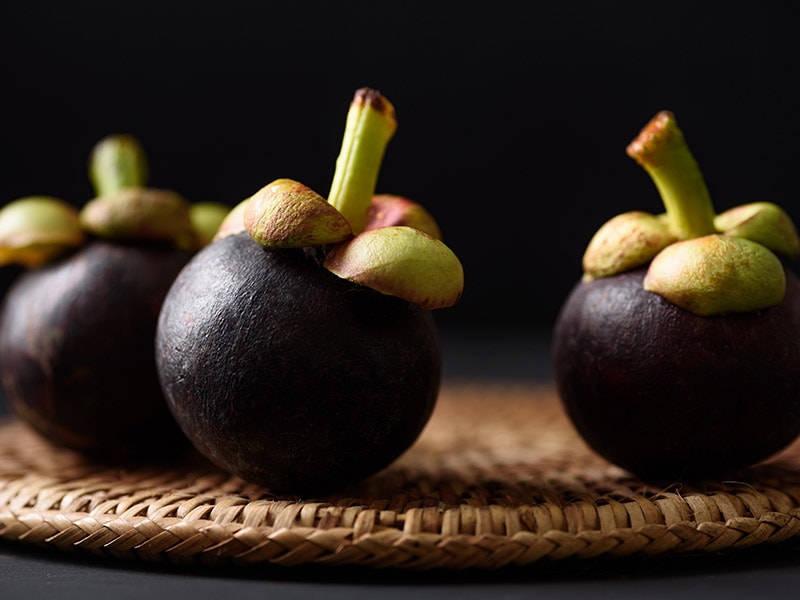
It will be a huge mistake if you ignore mangosteen. This excellent and delectable fruit originates in tropical areas in the Indian Ocean. Southeast Asia, southwest India, and tropical regions are the most mangosteen growing places globally.
In Southeast Asian countries, people consider this fruit “Queen of Fruit”. Its shape and size resemble tangerine, but it has dark and dense skin. Beneath the skin layer, there are several white and creamy segments. Each one has 1 seed inside.
Its taste is described as lychee, strawberry, peach, and pineapple fusion. Apart from the stalking flavor, it has a high value in preventing cancer and inflammation. Plus, your immune system and skin health will improve after eating mangosteen regularly.
Season: The peak season of mangosteen is in the summer.
Nutrients: High in B vitamins, C, fiber, sodium, and protein.
How to eat: Get rid of the fruit’s skin with a knife and eat the white flesh.
25. Black Sapote
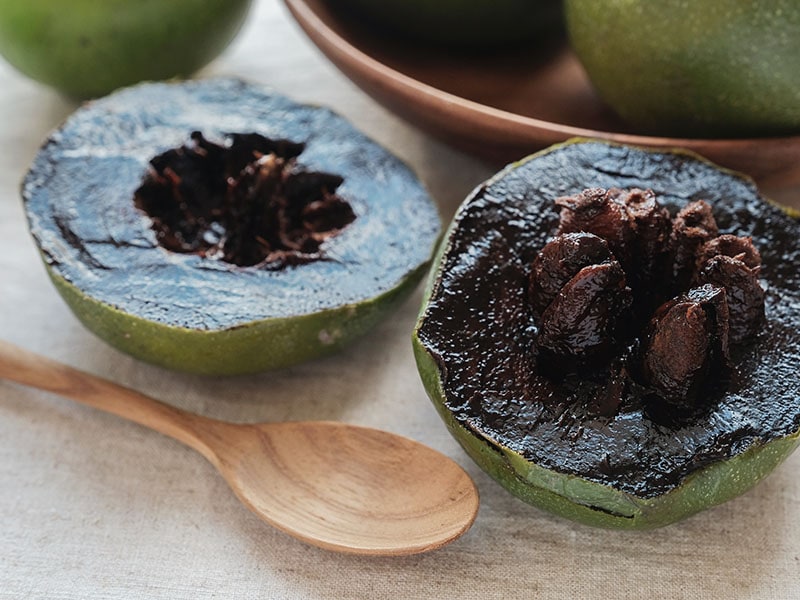
Black sapote is a close brother to persimmon. It is also known as chocolate pudding fruit, zapote Prieto, or black soap apple. Its name suggests it has black and tender flesh. And its skin is inedible with deep-green color.
When you consume the unripe version, you can feel this fruit’s slightly bitter, astringent, and caustic flavor. Its creamy texture is suitable for making brownies, shakes, smoothies, chia pudding, and bread.
This fantastic fruit is native to Central America, Mexico, and Colombia. In particular, this type has nothing to do with mamey or white sapote. Black sapote has a few different cultivars, such as Florida, Philippine, and Australian cultivars.
Season: Its season lasts from August to January in Mexico, and this fruit is usually ripe in December, January, or February in Florida.
Nutrients: Include potassium, protein, vitamin A, C, and more.
How to eat: Cut sapote into 2 parts, discard the seeds and enjoy them fresh.
Let’s taste the black sapote to feel its authentic taste.
Have You Chosen The Suitable Black Fruits?
Which is your best-loved black fruit? I have had the chance to taste these yummy fruits, and I hope you can do the things that I did. Trust me! The flavor of these fruits will make you want to taste them more than once. Check their taste right now!
Please share the other ideas by listing their name in the comment section. Another essential thing you have to do is to spread this exciting post to many people around you by sharing it. Thanks for your time!
